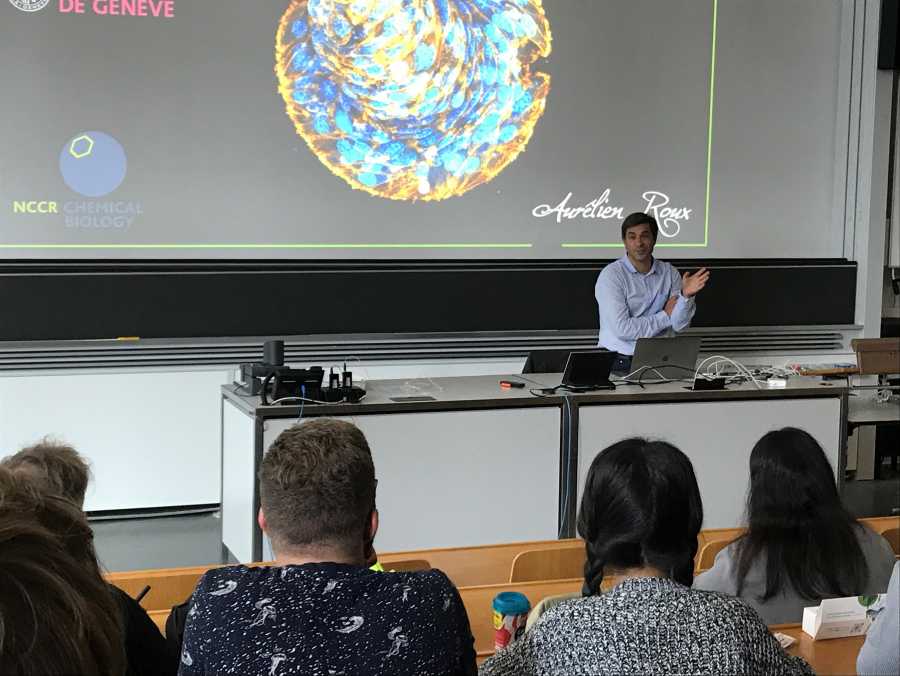Prof. Aurélien Roux from Geneva University crossed the Röstigraben to wow his audience with fascinating videos of cellular tornadoes and a hydra re-growing back its heads.
-

Dr. Céline Labouesse (D-MAVT) kicking off this year's Mechanobiology Seminar Series by introducing Prof. Aurélien Roux. -

Prof. Aurélien Roux of University of Geneva
Take romanesco cauliflower and sea urchins for example: patterns form in nature following a seemingly perfect order. However, there's a point at the poles of a perfect shape where that order is lost. That point is called a defect and is at the centre of Prof. Aurélien Roux's research interest. He examines the role defects play in morphogenesis (the processes by which order is created in the developing organism).
In his keynote given on Tuesday, 19 September 2023 for this year's first Mechanobiology Seminar Series event, Prof. Roux showed spectacular videos of muscle cell tornadoes that were triggered by confining these cells on micropatterns. The cells first show defined orientational 2D patterns (spirals and asters), before growing in vortices. Furthermore, he also explained his experiments with hydra, a small freshwater hydrozoa that feeds on shrimp. Cut in half, both parts of this animal manage to regenerate themselves - the foot regenerates the head, the head regenerates the foot. Now, when pressure (not too much!) is applied to the tissue of the foot, disrupting the topological order, it regenerates two heads instead of one, building the mythological hydra.
The talk inspired 20 people on site as well as 4 online. With the picture of both heads of the hydra happily munching away at shrimps, about half of them followed MaP Doctoral School's invitation to lunch. They took the opportunity to deepen the research conversation to make meaningful connections across different research groups - something MaP Doctoral School deems very important.
Are you interested in mechanobiology - where mechanics and engineering meet biology? Then don't miss the next events of the series and sign up for the mailing list!
Full research article: Guillamat, P., Blanch-Mercader, C., Pernollet, G. et al. Integer topological defects organize stresses driving tissue morphogenesis. Nat. Mater. 21, 588-597 (2022). external pagehttps://doi.org/10.1038/s41563-022-01194-5






